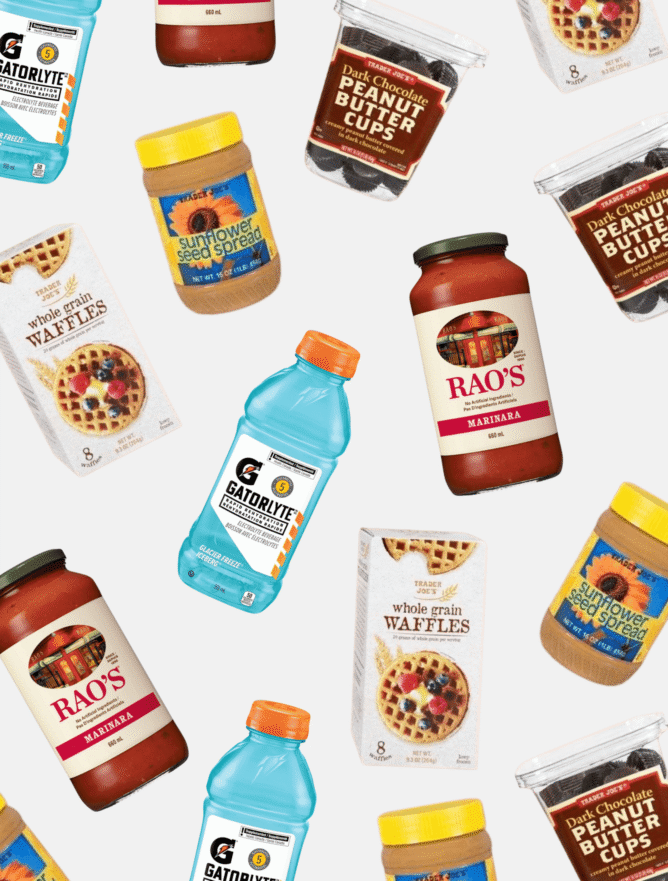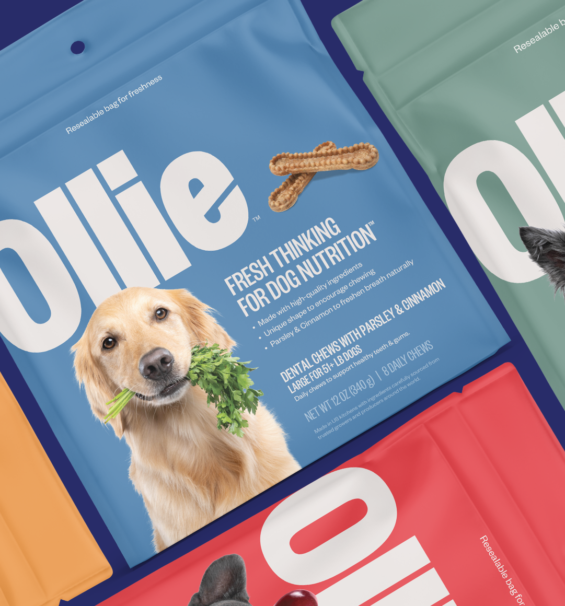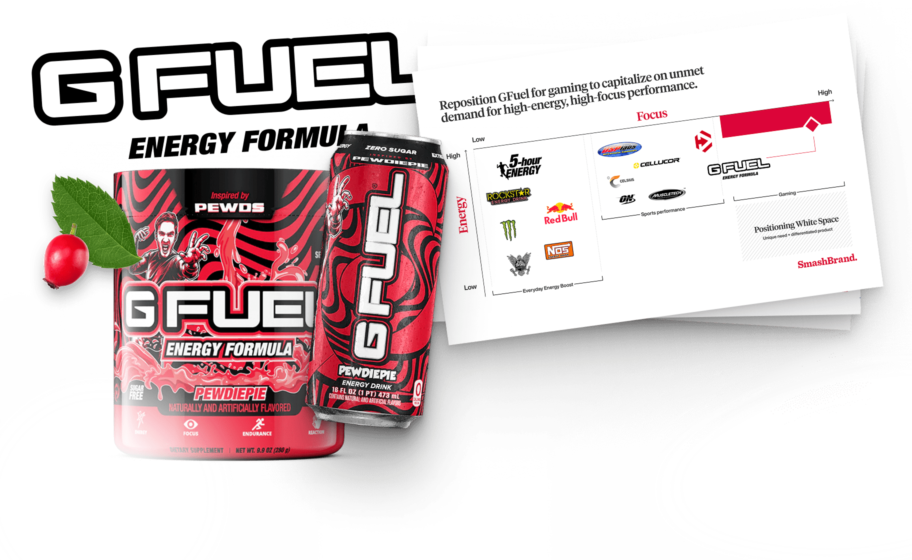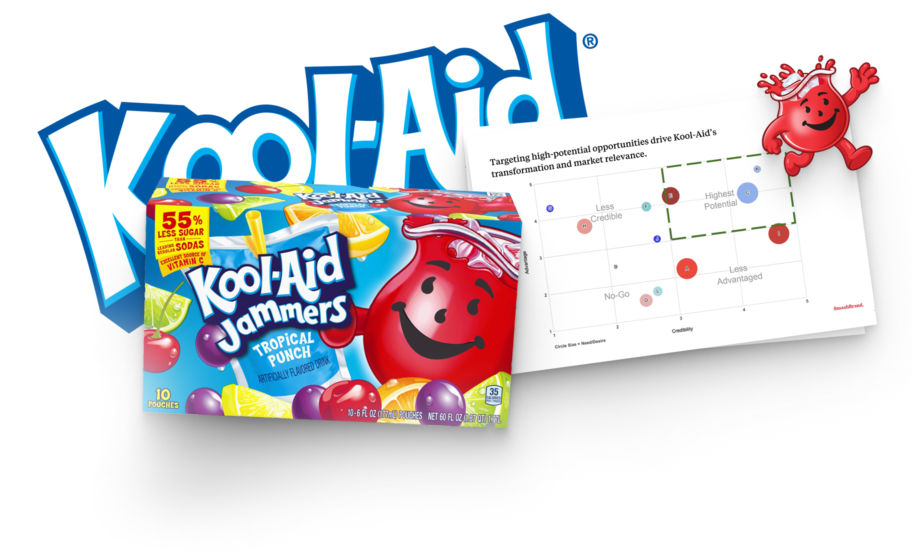Brand development is the cornerstone of success, especially in the dynamic and ever-evolving retail landscape. Brand development isn’t a helpful addition; for every CPG company looking to expand by establishing brick-and-mortar shops, it’s a necessity for sustained success. Through this meticulous brand development process, you craft a unique identity that resonates deeply with your current and target audience. There are many benefits to executing a retail brand development strategy. Still, one that stands out is how important it is for fostering customer loyalty and, in turn, driving sales.
Well-developed retail branding ensures that you establish a lasting connection with the target audience. Consequently, your brand acts as a beacon, enhancing customer experience and helping them make the right choices. Retail branding is what separates your brand from the rest. As a business owner who successfully implements a retail branding strategy, you will increase your market share and influence brand perception.
Effective retail brand development rarely happens by chance; it happens through a step-by-step process. Retail Branding demands many intricacies that, if skipped, can lead to disappointing outcomes. Understanding each step is crucial to success in the retail industry.
If you want insights into retail brand development, we have good news. We created this guide to equip brand owners looking to expand by opening new stores with enough information about the entire retail branding process. In this guide, you will understand how to implement brand development as you embark on your retail journey.
What is Retail Brand Development?
Retail brand development is the strategic process of creating a strong, recognizable retail brand strategy that fosters consistency across every retail store. It’s not just about logos or taglines—it’s about crafting a compelling brand narrative that aligns with consumer needs and expectations. A well-executed retail marketing approach enhances brand positioning, ensuring customers experience the same quality and identity at every location.
By implementing effective retail branding strategies, retailers build brand equity, strengthen brand performance, and establish lasting customer loyalty. Unlike product branding, which focuses on individual products, retail branding is about the complete shopping experience, reinforcing a cohesive identity that resonates across all locations. A unified marketing strategy ensures your brand remains top-of-mind, no matter where customers shop.
It is expedient for us to explain the difference between retail and product brand development. Most brands confuse both forms of brand development, eventually leading to ineffective implementation. So, to avoid that sad reality, let’s examine the differences.
Retail Branding vs Product Branding
Retail store branding focuses on creating a unified retail brand identity across all store locations, ensuring customers experience the same look, feel, and quality wherever they shop. In contrast, product branding targets specific customer segments with distinct product offerings while maintaining alignment with the overarching retail brand design.
For example, a retail brand development strategy for a food brand may cater to adults while launching a product line tailored to children. Although the products serve different audiences, they still follow the same retail branding strategy, reinforcing consistency and recognition.
Strong branding for retail ensures that every product and store interaction supports a cohesive retail brand marketing approach, fostering customer loyalty and brand trust.
The Core Elements of Retail Brand Development
Effective retail branding encompasses several key elements, each contributing to the overall brand experience:
Brand Identity: A distinctive brand identity is the foundation for your brand. It encompasses your brand’s name, logo, color palette, and visual style. In establishing different stores for your brand, you must create a cohesive and recognizable image that resonates with consumers.
Brand Messaging: Compelling brand messaging articulates the brand’s values, personality, and promise to its audience. It’s about crafting a consistent narrative that resonates with your target customers across various touchpoints, from in-store interactions to online engagements. Consistency across your various stores is not just a goal but a necessity. An excellent brand message is essential in etching your brand into the target audience’s memory.
Customer Experience: A positive shopping experience is a game-changer in the retail industry. As a brand owner, constantly improving and upholding customer experience enhances brand value and recognition. The customer experience encompasses every interaction with your brand, from browsing online to purchasing.
Product Positioning: Strategic product positioning ensures you showcase products to your target audience at the right time. Adequately implemented retail branding maximizes your visibility and appeals to your target audience. It’s about understanding the competitive landscape in the retail industry and aligning product positioning with your brand’s overall identity.
Retail Environment: The retail environment is more than just shelves and products; it’s a stage where brands and CPG products come together to tell a story and engage customers. It’s a physical manifestation of your brand identity, a sensory experience that can make or break your connection with shoppers.
Successful retail branding cuts through the noise and fosters a robust retail environment, which helps you stand out. It’s like a siren song, drawing customers in and making them feel like they’ve entered your unique world.
Building emotional connections is also part of what retail brand management does for you. Beyond just displaying products, a well-designed environment evokes feelings and creates memories. Think of the warmth and aroma of a bakery or the sleek, futuristic feel of an electric vehicle brand– these experiences stay with customers long after they leave.
Why Retail Brand Development Matters
In the crowded retail industry, with brands vying for attention and shelf space, a strong retail brand development strategy is the difference between blending in and becoming a beacon for your customers.
Here are some reasons why retail branding matters to CPG companies:
Building Brand Loyalty and Trust
Think about your favorite brands. What draws you to them? It’s not just the product itself. It’s the emotions, values, and experiences that the brand evokes.
A strong retail branding strategy builds these connections, creating a sense of familiarity and trust that translates into loyal customers.
By crafting a compelling brand story, you connect with consumers on an emotional level. You share your brand values and why you exist. This creates a sense of belonging and community, making customers feel part of something bigger than a transaction.
Brand consistency across all your stores in every location reinforces trust. It shows that you stand by your values and promises, making customers feel confident in their interactions.
When brands go beyond generic messaging and tailor their communication to individual preferences, they create a sense of value and appreciation. This is what you must strive for as a brand owner. The personalized experience your brand offers fosters deeper connections and encourages repeat business.
Differentiation in a Competitive Market
Standing out in a sea of similar products requires a clear and unique brand identity. Retail branding helps you define your position in the market, differentiating you from competitors.
What makes your brand special? What unique benefit do you offer to customers? A strong brand development strategy hones your value proposition, making it clear and compelling.
Who are you trying to reach? Understanding your target audience’s needs and desires allows you to tailor your brand messaging and offerings, creating a magnetic pull for the right customers.
Injecting personality into your brand makes it memorable and engaging. Are you playful and quirky? Bold and innovative? Defining your brand personality sets you apart and attracts customers who resonate with your vibe.
Influencing Purchasing Decisions
Retail brand development plays a crucial role in influencing consumer choices. It acts as a subconscious guide, helping customers navigate the overwhelming options.
A strong brand reputation, built through consistent messaging and positive customer experiences, reduces consumers’ perceived risk. As a result, they’re more likely to trust and choose your product over an unknown competitor.
Branding goes beyond logic. It triggers emotions and evokes memories. The sight of your logo, a familiar scent, or a relatable tagline can instantly influence purchase decisions, especially when faced with similar products.
When customers love your brand, they become advocates. They tell their friends, write positive reviews, and promote your products. This organic word-of-mouth marketing, fueled by brand loyalty, is invaluable in today’s competitive retail landscape.
Steps to Successful Retail Brand Development
The following are the steps to an effective retail brand development strategy:
Understanding Your Target Audience
Building a strong brand retail presence starts with deeply understanding your audience. Beyond basic demographics, successful branding in the retail sector requires insights into consumer behavior, preferences, and expectations.
Market Research: Use quantitative data, such as surveys, polls, and focus groups, to gather information about demographics. Know their income levels, shopping habits, and brand preferences. This will paint a broad picture of who they are and what makes them tick.
Buyer Personas: Craft detailed personas beyond age and gender, fleshing out their aspirations, frustrations, values, and media consumption habits. Imagine Sarah, the busy working mom who craves convenience and healthy options, or David, the tech-savvy millennial who values sustainability and unique experiences.
Customer Feedback: Analyze existing customer reviews, social media comments, and in-store interactions. What do they love? What frustrates them? This qualitative data reveals their emotional connection to your brand and identifies areas for improvement.
Retail Audits: Don’t just look inwards; look outwards. Conduct competitive audits of your direct and indirect competitors. Visit their stores and analyze their product placement and brand messaging. This helps you understand the landscape, identify gaps you can fill, and avoid replicating what’s already saturated.
Mystery Shopping: Go undercover! Hire mystery shoppers to experience your store through the eyes of your target audience. Observe their interactions with staff, product navigation, and overall impression. This unfiltered feedback exposes hidden pain points and opportunities you might have missed.
Crafting a Compelling Brand Identity
In the retail sector, where choices bombard your customers, a strong brand identity is your lighthouse, guiding them toward your unique offerings.
So, how do you craft this irresistible identity that sets you apart?
Every brand needs a bedrock. Define your core values – the guiding principles that shape your decisions and actions. These are your brand values. Are you passionate about sustainability? Are you focused on community and committed to innovation? These values are the internal compass that ensures your brand remains authentic to itself.
Next, articulate your mission – your big-picture purpose. Why do you exist? What problem are you solving? This mission statement gives your brand a sense of direction and inspires your team and customers.
Your Visual Signature is essential in crafting a compelling brand identity. Think of your brand name as your first handshake. It should be memorable, pronounceable, and reflect your core values. Opt for something unique that sparks curiosity and sets you apart.
Next comes your visual identity – the logo design that becomes your visual shorthand. It’s not just a picture; it’s a symbol that encapsulates your essence.
Finally, craft a tagline that’s your verbal elevator pitch. It’s a concise, impactful sentence that captures your brand’s essence and resonates with your target audience.
Define your brand voice and ensure consistency across all touchpoints, from website copy to in-store signage. To maintain this consistency, create a style guide. This is your brand bible, outlining your logo usage, color palette, typography, and tone of voice. It ensures that everyone, from designers to digital marketing teams, communicates the brand in a unified way.
Creating a Seamless Customer Experience
In today’s competitive retail landscape, creating a seamless customer experience (CX) isn’t just a nicety; it’s a survival tactic. It’s the difference between customers raving about your brand and ghosting you for the next competitor. So, how do you weave this magic into your retail brand development?
Your Customer Experience is like a carefully crafted symphony. Each touchpoint in your different stores is a note that needs to be harmonized. Integrate your systems and train your staff to be omnichannel heroes. You must ensure every interaction feels like part of the same beautiful melody.
You need to embrace technology but keep the human touch. Chatbots and AI are handy for basic tasks, but customers crave genuine connections. Empower your staff to be product experts and problem solvers. Let them personalize interactions and offer recommendations. Technology should enhance the human experience, not replace it.
Let personalization be your secret sauce. Treat your customers like individuals, not just numbers in a database: leverage purchase history, browsing behavior, and social media interactions to tailor your offerings and communication. Imagine sending a birthday email with a special discount on your favorite product.
As a brand owner, you must remember that the journey continues after the sale. Don’t ghost your customers after they hit “purchase.” Instead, send them order updates, shipping notifications, and post-purchase recommendations. Offer helpful tips on caring for their new item or suggest complementary products. Engage them on social media, gather feedback, and address concerns promptly. Show them you care, and they’ll want to return for more.
Building Brand Awareness and Loyalty
Brand awareness is the first step to building a loyal customer base. It’s about making your brand recognizable and memorable to your target audience. Brand loyalty goes beyond recognition; it fosters emotional connections and encourages repeat business.
First, you need to know what your brand stands for. Understand your core values and how to communicate your brand personality to your target audience effectively. Clearly define your target audience and identify their needs.
Connect with your audience on an emotional level. Share your brand story, values, and how you make a difference. Use storytelling across all touchpoints. Consistency strengthens brand recognition. Be authentic and transparent. People will connect with genuine brands, and you can eventually become a national brand through authenticity.
Measuring and Refining Your Brand Strategy
A successful retail brand is a dynamic performance. It’s a dynamic interplay between audience feedback, data-driven insights, and the willingness to adapt.
KPIs are the metrics that tell you how your brand resonates with your audience. Brand awareness, engagement, loyalty, and perception are your key instruments. Track them intently and identify which sections need more attention or which are stealing the show.
Not all feedback will be a standing ovation. Sometimes, it’s the murmurs of dissatisfaction across your stores or maybe one store. Customer reviews are your chance to know what people say about your stores and brand. Analyze the reviews and offhand comments to pinpoint areas where your brand is failing, instruments are clashing, or the melody needs a fresh tempo.
The retail sector is ever-changing, with new trends regularly introduced in nearly every market. Be the conductor who stays ahead of the curve. Research trends, analyze competitor strategies, and understand how your audience is shifting. Adapt your brand accordingly, introduce new marketing channels, and adjust your voice.
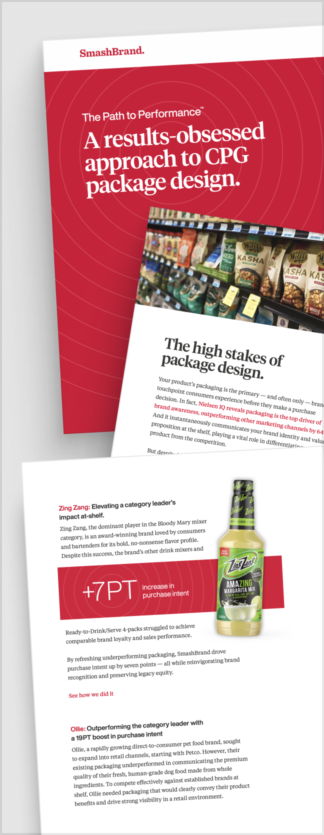
Path to Performance™
Taking a results-obsessed approach to CPG package design.
Learn how SmashBrand’s proprietary process – rooted in scientific principles, informed by data, and validated by your target audience – takes the guesswork out of package design and delivers guaranteed results.
"*" indicates required fields
Case Studies
Let’s look at two brands that built brand loyalty through retail brand development after facing challenging situations.
Trader Joe’s
Trader Joe’s, the grocery store with a unique personality, wasn’t always the haven for adventurous people it is today. In the 1970s, it faced a crisis – an uninspired brand with dwindling sales and a disconnect with potential customers. So, they embarked on a radical transformation. Through an effective retail brand development, they were able to achieve the following:
- Cultivating a quirky persona: Trader Joe’s store left the sterile aisles and fully embraced a playful atmosphere. The staff wore Hawaiian shirts, and pirate murals decorated the walls. They weren’t just selling groceries; they were offering an experience.
- Building brand loyalty through unique offerings: Fearless in their private-label game, they introduced cult-favorite products like “Cookie Butter” and “Everything Bagel Seasoning.” These products created a sense of discovery and exclusivity.
- Leveraging influencer marketing before its time: Word-of-mouth became their secret weapon. Delighted customers became brand ambassadors, spreading the Trader Joe’s gospel through organic recommendations.
The result was a devoted following and skyrocketing sales. Trader Joe’s became a brand that transcended the typical grocery store.
Dove
Once synonymous with bar soap and practical beauty, Dove faced a harsh reality – women were no longer connecting with their brand. They were tired of unrealistic beauty standards and yearned for something genuine. So Dove embarked on a retail brand development journey:
- Redefining beauty standards: They launched the “ Real Beauty” campaign, featuring diverse women of all shapes, sizes, and ethnicities. This resonated deeply, sparking conversations and challenging industry norms.
- Elevating brand experience: Dove went beyond product placement. They hosted workshops, created self-esteem programs, and partnered with NGOs, transforming their brand into a force for positive change.
- Authentic influencer marketing: They partnered with real women, not just celebrities, to share their stories and struggles, fostering trust and transparency.
Dove’s success hinges on understanding and addressing the evolving needs of its audience head-on. It didn’t just sell soap; it sold empowerment, self-love, and a redefined vision of beauty. This attracted new customers and strengthened the bond with existing ones.
Challenges in Retail Brand Development
Building a thriving retail brand is no walk in the park. Here are some common challenges brands face, along with strategies to conquer them:
Lack of Differentiation
Blending in with the sea of sameness. Customers have countless options, so why should they choose you?
The solution to this challenge is to find your brand’s unique voice and values. What makes you tick? What problem do you solve that others don’t? Embracing your quirks and amplifying your differentiators is critical to standing out.
Omnichannel Disconnect
Disjointed experiences across your stores. Customers expect a seamless journey anytime and anywhere they visit your stores.
So, you should bridge the gap! Create a unified brand experience. Ensure consistent messaging, product availability, and customer service across all channels and stores—leverage technology to personalize the journey and make it feel effortless.
Your Customers Are Evolving
Keeping up with ever-changing customer preferences and expectations can take time and effort. Today’s shoppers are informed, demanding, and have many choices.
However, you should get to know your customers like family! Actively listen to their feedback, analyze data, and conduct market research. Be prepared to adapt your brand voice, product offerings, and marketing strategies to cater to their evolving needs and desires.
Data Overload
Social media can overwhelm your customers with information, making data collection impossible. But you can focus on quality over quantity. Identify key metrics that align with your brand goals and track them religiously. Invest in analytics tools and talent that can transform data into actionable insights to guide your decision-making.
Future Trends in Retail Brand Development
The retail landscape is constantly in flux, and the future promises even more exciting transformations. Here’s a peek into the trends that will reshape how brands develop and connect with consumers:
AR & VR
AR/VR-powered showrooms: Customers virtually try on clothes or furniture, interacting with products in a hyper-realistic way. (Think of customers trying on a new dress from your brand without leaving your couch!)
AI-powered personalized shopping: Chatbots with profound product knowledge offer recommendations and answer questions, tailoring the experience to individual preferences.
The Rise of the Influence Enterprise
Influencer marketing will evolve beyond celebrity endorsements. Brands will partner with micro-influencers – niche experts with engaged communities – to create authentic content and drive hyper-targeted campaigns.
Data-Driven Storytelling
Cold, complex data will be used to craft emotionally resonant narratives. Imagine video ads that adapt based on your customers’ past purchases or social media activity, making you feel like your brand is speaking directly to them.
Data-Driven Brand Development That Can Guarantee Sales Performance.
If you need a complete retail branding blueprint to ensure your brand’s success, we can help. SmashBrand is a brand development agency that researches, designs, and tests all products to ensure peak shelf performance. Book a time to discuss your project with our team.
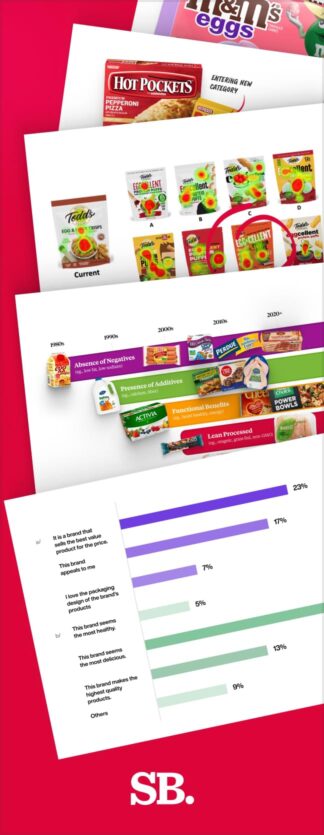
Nice Package
Don’t miss out on our monthly newsletter Nice Package!
Each month, we deliver a data-driven newsletter directly to your inbox, unpacking a critical topic in the FMCG & CPG industry.
"*" indicates required fields
Subscribe to
Nice Package.
A monthly newsletter that unpacks a critical topic in the FMCG & CPG industry.
Free Resource.

CPG product repositioning guide.
Explore the five undeniable signs your CPG product needs repositioning along with strategies for leveraging consumer insights for a guaranteed market lift.
Learn More About CPG product repositioning guide.
